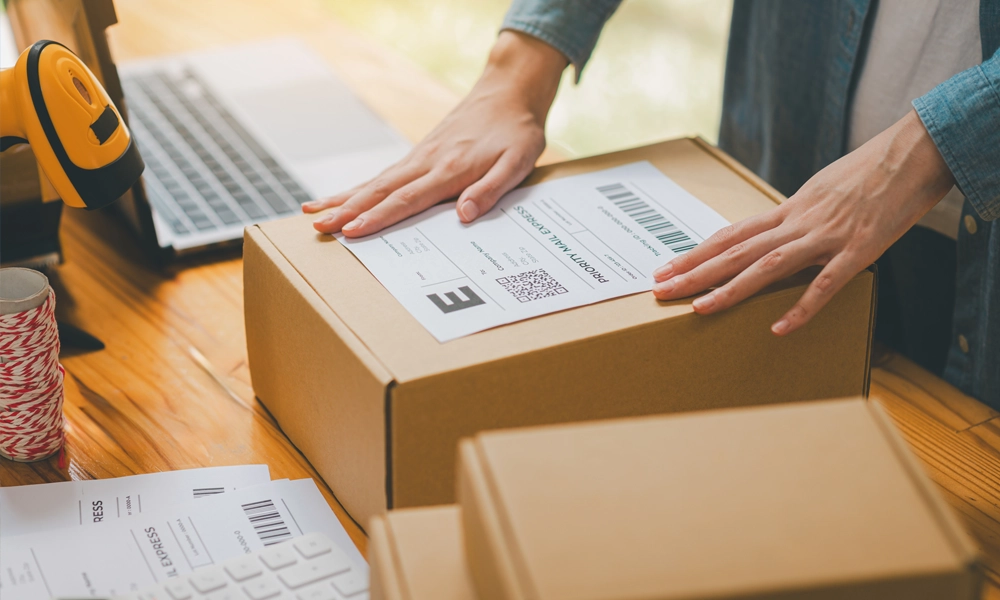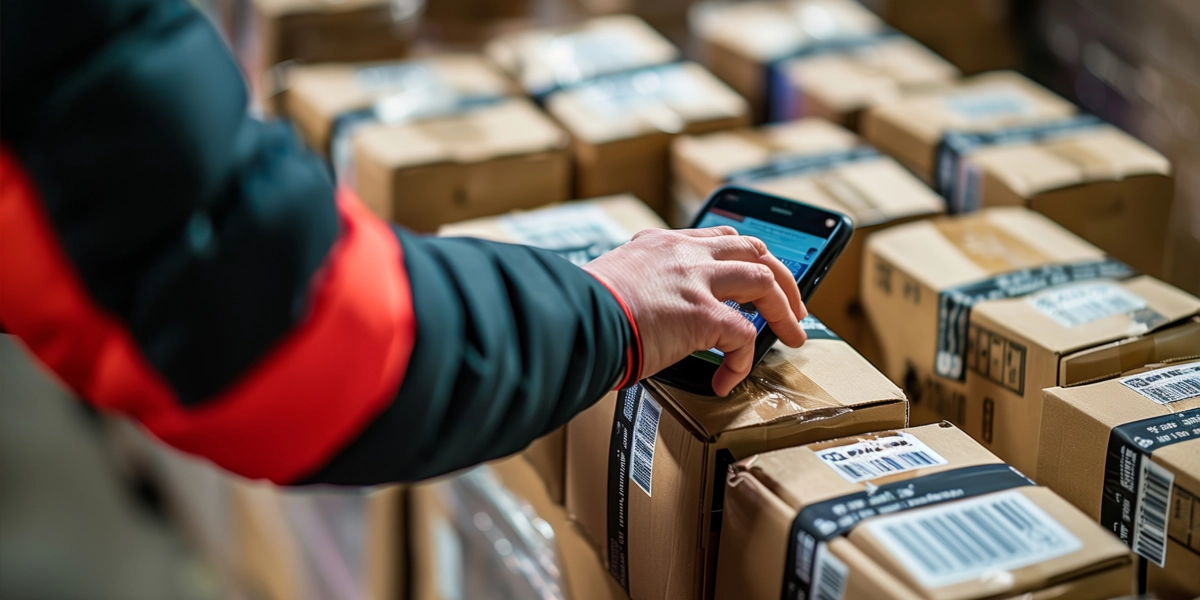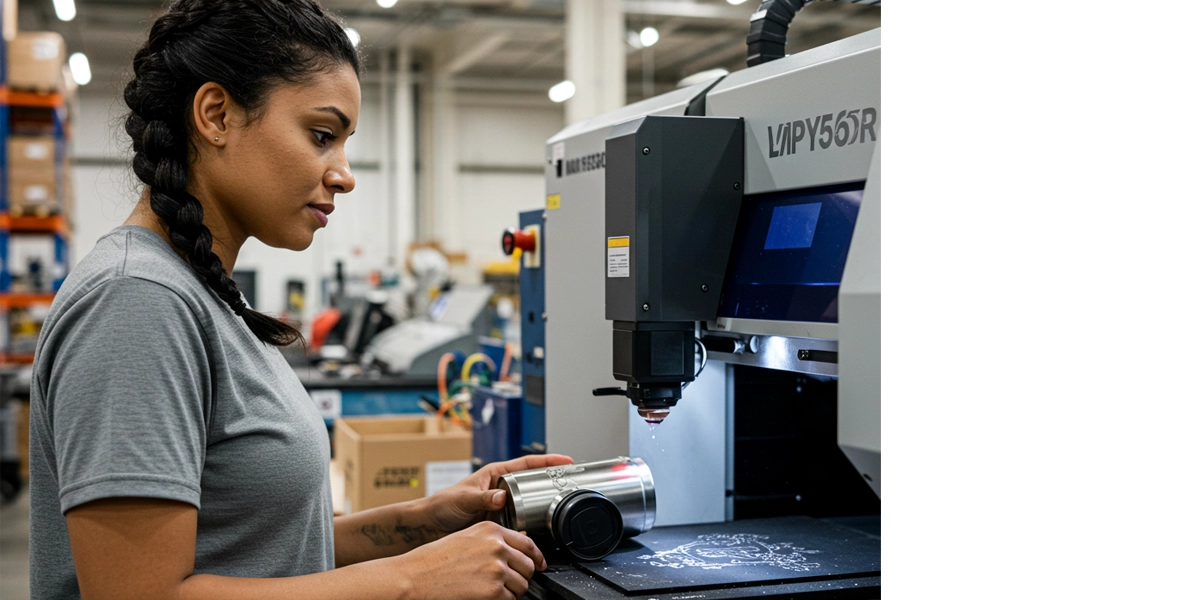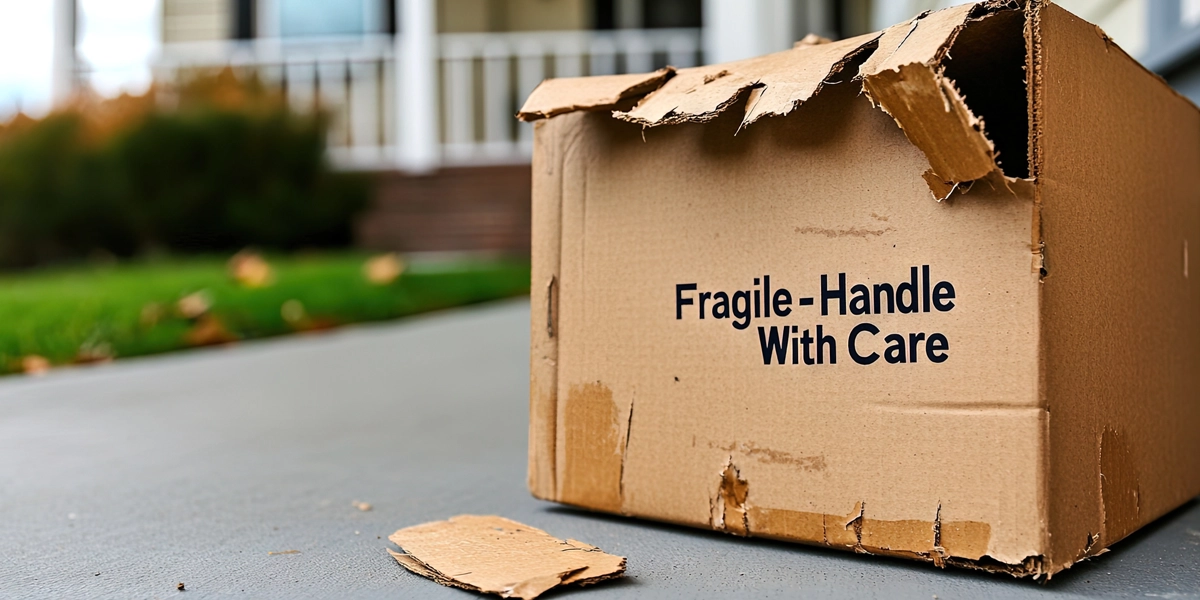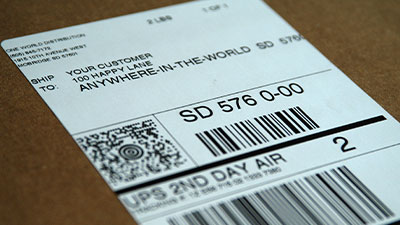In This Article:
Having a superior reverse logistics approach and infrastructure is essential to running an online business. Returns are inevitable, and a partnership with a reputable 3PL ecommerce company will help you manage and lower your return rate. This is the percentage of products that customers return after being purchased. High return rates can greatly impact your profits and overall business success.
Compared to traditional brick-and-mortar stores with an average return rate of 10%, online businesses face a higher challenge with a return rate of between 20-30%. 86% of online shoppers consider the return policy while making purchasing decisions and 67% of online shoppers are considered “serial returners,” buying multiple versions of one item with the intent to return most of their purchases.
Managing customer queries and returns management can have a considerable impact not only on your bottom line but also lead to poor reviews, tarnishing your brand. But don’t worry! These challenges can be overcome.
Reduce your ecommerce return rate and boost your profits using our 7 proven strategies. These strategies cover various aspects of your business operations, from improving product descriptions to partnering with third-party logistics (3PL) providers. They are designed to help you directly address return issues and make your ecommerce business more profitable.
Investigating Ecommerce Return Rates
The return rate is a crucial KPI that shows how often customers return orders. As an ecommerce seller, it’s important to keep an eye on this metric because it directly affects your profits. The ecommerce return rate refers to the percentage of products sold that customers return to the seller. A high return rate might indicate product descriptions, customer expectations, or quality control issues, while a low return rate typically suggests that customers are satisfied with their purchases.
How to Calculate Return Rate Ecommerce:
Ecommerce Return Rate = (Number of Orders Returned / Total Number of Orders Sold) x 100
Recent industry data shows that the average return rate is about 9% for brick-and-mortar stores while at least 30% of ecommerce products are returned. This tripling of the return rate presents a unique challenge: dealing with the financial impact and the operational difficulties of handling returns.
The Financial Impact of High Return Rates
Ecommerce returns are more than just a logistical challenge—they can severely impact your bottom line. High return rates lead to increased shipping costs, restocking expenses, and potential inventory losses. In 2022, the cost of retail returns in the United States hit an astounding 817 billion U.S. dollars, with 25% attributed to online purchases. Out of the 1.3 trillion U.S. dollars spent, 16.5% ended up as returns, a significant hit to ecommerce businesses’ net profits.
Beyond direct costs, frequent returns can also:
- Disrupt inventory management and forecasting.
- Reduce customer lifetime value if shoppers develop a habit of frequent returns.
- Lead to higher processing costs for labor, repackaging, and potential product disposal.
High returns not only have financial consequences but also raise sustainability concerns.
The Environmental Implications of Ecommerce Returns
Returns don’t just hurt profits—they have a massive environmental impact. Every return generates carbon emissions from shipping, packaging waste, and, often, product waste. In fact:
- The carbon emissions from returns can produce an additional 30% of emissions from the initial delivery.
- In 2022 alone, retailers sent over 9.5 billion pounds of returned products straight to landfills.
- Online shopping generates 4.8 times more packaging waste than brick-and-mortar stores.
To reduce this environmental burden, brands can:
- Encourage eco-friendly packaging and reusable shipping materials.
- Implement smarter sizing tools to reduce fit-related returns.
- Offer incentives for exchanges instead of returns, keeping products in circulation.
- Implement kitting services, lot tracking, and batch picking, or consider switching to a 3PL with more environmentally friendly fulfillment procedures.
Sustainability-conscious consumers are increasingly choosing brands that take steps to minimize returns’ ecological impact, making it a competitive advantage as well.
High return rates can cause serious problems for your online store:
- Lower Profits: Returns reduce your profit margins as you spend more money processing returns and shipping out replacements. In 2022, the cost of retail returns in the United States reached a staggering 817 billion U.S. dollars, with a quarter of it stemming from online retail.
- Inventory Issues: Returning products can severely disrupt your inventory management. When numerous items are sent back, it becomes challenging to predict your inventory needs accurately. This uncertainty can lead to overstocking or understocking issues, both of which are detrimental to your business.
- Negative Customer Experience: When customers have to return something because it’s defective or they’re not happy with it, it can harm your brand reputation and make them less likely to shop with you again. According to a study by Bloomreach, 92% of customers will not buy from a retailer again after three or fewer negative experiences.
Understanding these consequences can help you, as an ecommerce business owner, focus on finding ways to lower your return rate. One World Direct offers efficient inventory management and order fulfillment solutions that can help reduce ecommerce return rates. Streamline your operations and minimize returns using our fulfillment services and call center services for complete reverse logistics management.
Common Reasons for High Ecommerce Returns
Understanding why customers return products can help online retailers minimize returns, improve customer satisfaction, and protect profits. Below are the most common reasons for high return rates and what you can do to reduce returns.
1. Wrong Item Purchased
Why it Happens: Customers may mistakenly select the wrong size, color, or product variant due to unclear descriptions or images.
Solution: Provide detailed product descriptions, size guides, and high-quality images. Consider offering AR/VR fitting tools to reduce errors.
2. Product Didn’t Match Description
Why it Happens: Customers expect the product to look or perform differently based on misleading descriptions or inaccurate photos.
Solution: Ensure all product images, videos, and descriptions are clear, accurate, and up to date. Highlight key features and limitations honestly.
3. Item Arrived Damaged
Why it Happens: Poor packaging or mishandling during shipping leads to damaged goods.
Solution: Use sturdy packaging, implement quality control measures, and partner with reliable shipping providers. Offer replacements over refunds where possible.
4. Poor Fit or Sizing Issues
Why it Happens: Clothing and footwear often have inconsistent sizing across brands, leading to high return rates.
Solution: Provide detailed size charts, customer reviews, and virtual try-on tools to help customers choose the right fit before purchasing.
5. Customer Changed Their Mind
Why it Happens: Impulse buyers may regret their purchase or decide they no longer need the item.
Solution: Encourage thoughtful purchasing with detailed product descriptions, social proof (reviews/testimonials), and an easy exchange policy to retain revenue.
6. Late Delivery
Why it Happens: Some customers abuse return policies by using items and returning them (wardrobing) or committing fraud.
Solution: Implement return fraud prevention measures such as requiring original packaging, tracking return histories, and offering store credit instead of cash refunds.
7. Return Fraud
Why it Happens: If a product arrives later than expected, especially for time-sensitive purchases, customers may return it.
Solution: Improve shipping logistics, provide accurate delivery estimates, and offer expedited shipping options, such as overnight shipping for urgent orders and on-time delivery.
Further Investigation: Bracketing and Other Reasons for High Returns
63%
of shoppers reported bracketing in a 2022 survey.
The shopping habits of ecommerce customers play a significant role in driving high return rates. A common behavior among online shoppers is ‘Bracketing,’ where customers intentionally purchase multiple sizes or variations of a product with the plan to return the unwanted items. This behavior significantly contributes to the overall return rate, and 63% of shoppers reported bracketing in a 2022 survey.
Bracketing creates a significant strain not only on ecommerce businesses but also on the environment. In fact, the carbon dioxide produced from ecommerce returns in 2019 was equivalent to 3 million cars driving in a single year, CBS reported, citing data from Optoro, a reverse-logistics technology company.
How to Reduce Returns in Ecommerce: 7 Proven Solutions
1. Improve Product Descriptions and Photography
Detailed product descriptions are one of the easiest and quickest ways to reduce your ecommerce return rate. You can answer potential customer questions before they even ask by providing thorough information about product features, specifications, and sizing. This proactive approach helps manage expectations and can significantly decrease returns.
Here are some key elements to include in your product descriptions:
- Material & Construction: Clearly state the materials used and provide details about the construction process to convey a sense of quality.
- Dimensions & Fit: Include accurate measurements and offer guidance on how the product fits to help customers choose the right size.
- Usage & Care Instructions: Explain how to properly use and care for the product to prevent any misunderstandings or misuse.
In addition to detailed descriptions, high-quality photography is essential for ecommerce success. When customers can’t physically see or touch a product, images become their primary source of information. Here’s how you can optimize your product photos:
- Showcase from Multiple Angles: Capture photographs that display all sides and angles of the product, giving customers a complete visual representation.
- Enable Zoom Functionality: Implement a zoom feature on your website so customers can closely examine textures and fine details.
- Include Contextual Imagery: Feature lifestyle shots or images showing the product being used in real-life situations, helping customers better understand its size and functionality.
By implementing these strategies consistently across your ecommerce store, you’ll likely see a decrease in return rates and an increase in long-term profitability.
2. Enhance Website User Experience
Creating a user-friendly, intuitive website is essential for reducing ecommerce return rates. A core part of this strategy involves optimizing your website for mobile users.
Optimizing for Mobile
With an increasing number of shoppers making purchases from their smartphones, providing them with a smooth and efficient online shopping experience is crucial. A mobile-friendly site enhances the shopping experience by ensuring easy navigation and quick loading times and helps customers make informed purchase decisions. By 2024, there will most likely be over 187 million active mobile shoppers in the US alone, so prioritizing your mobile shopping experience is a must.
Reducing Buying Friction
A well-optimized mobile site can significantly reduce buying friction:
- Fewer page redirects
- Minimal loading time
- Easily accessible product information
- Clear calls-to-action
- A seamless checkout process
By mitigating these common pain points, you can decrease the likelihood of customers making hasty or ill-informed purchases that they later regret and return.
Lowering Returns
An enhanced website user experience can lead to more accurate purchase decisions and thus lower return rates. Remember: every return avoided is potential profit retained. Investing in optimizing your website for mobile users is a smart move that can yield significant returns for your ecommerce business.
3. Utilize Third-party Logistics (3PL)
Third-party logistics (3PL) providers are a crucial part of ecommerce, especially in terms of reducing return rates. By partnering with a 3PL, you can benefit from their expertise in handling storage, shipping, and returns processing. This can directly impact your profits. Here are the main advantages:
- Efficient Inventory Management: 3PLs use advanced inventory systems to ensure products are always available, reducing the chances of sending wrong items that often result in returns.
- Fast Shipping: Speed is important in ecommerce; 3PLs are great at quickly and accurately shipping orders, which leads to satisfied customers and fewer returns due to shipping delays.
- Streamlined Returns Handling: A capable 3PL makes the returns process easy for you and your customers by taking care of all the logistics, from providing return labels to restocking or disposing of returned items.
Using these services lets you concentrate on your main business tasks while letting the experts handle logistics. They’ll help improve your entire fulfillment process for a more desirable customer shopping experience while helping you reduce returns through professional management. A capable 3PL will help reduce returns, lower picking and packing errors, and implement warehouse picking strategies to further reduce logistics costs.
4. Implement an Effective Online Review System
Reviews are essential to improve your ecommerce business and help customers make informed purchases. Even a single review can have a tremendous effect. When a product goes from zero reviews to displaying just one, the rate that shoppers actually click the purchase button skyrockets by 65%. Displaying online reviews increases conversion rates by 270% and will help you lower your return rate. Deploying an online review system is a powerful strategy to harness customer feedback for multiple benefits:
- Identify and Resolve Recurring Issues: Customer reviews often highlight recurring problems with products. Businesses can pinpoint and rectify issues by analyzing this feedback, leading to a better product offering and fewer returns.
- Boost Consumer Confidence: Shoppers rely on peer evaluations when making purchasing decisions. Visible, positive reviews can increase buyer confidence, reducing the likelihood of returns due to unmet expectations.
- Enhance Product Descriptions: Use insights from reviews to enrich product descriptions. If customers frequently comment on a specific feature, clarify this in the description to ensure future buyers are well informed.
- Foster Continuous Improvement: Constructive criticism is invaluable for continuous product enhancement. Implement changes based on customer suggestions to elevate product quality and satisfaction.
By integrating a robust review system, you not only give voice to your customers but also capture real-time market research data that’s critical for reducing return rates and elevating the overall shopping experience.
5. Streamline the Returns Process
To secure customer loyalty and reduce the ecommerce return rate, it’s essential to simplify the returns process.
- Offer Exchanges: Customers often prefer a different size or color instead of a refund. Make this option visible and easy to use.
- Provide Immediate Refunds: When a return is inevitable, process refunds swiftly to maintain trust and encourage future purchases.
- Cover Return Shipping Costs: Free returns are a powerful incentive for customers to shop with confidence, knowing they won't incur extra costs if an item doesn't meet their expectations.
This approach can transform the potentially negative experience of a return into a positive interaction that fosters customer retention and brand loyalty. Remember, it’s always easier to convert a returning shopper than acquire a new one, so following these best practices will help you manage your returns while building a reputation for excellent customer service.
6. Considerations for International Shipping
When it comes to international fulfillment, there are several unique challenges that can significantly impact return rates. One of the critical factors contributing to these returns is unexpected customs charges. To address this issue effectively, it’s worth considering the implementation of DDP (Delivery Duty Paid) in your shipping process.
With a DDP setup, the seller assumes responsibility for all duties and import fees, eliminating any unforeseen customs charges for the buyer. This approach offers multiple benefits that can help optimize your international shipping strategy:
- Clarity in Pricing: DDP provides customers with transparency regarding the total cost upfront. By eliminating hidden charges, this can significantly boost customer satisfaction and minimize returns.
- Enhanced Customer Experience: The simplicity of a DDP setup streamlines the buying process for international customers, as they no longer have to worry about additional fees upon delivery.
- Reduced Return Rates: By addressing one of the main reasons for international returns – unexpected customs fees – DDP can help you reduce your ecommerce return rate.
7. Leveraging Technology to Minimize Returns
Advancements in ecommerce technology have made it easier to reduce returns by helping customers make better purchasing decisions upfront. Some effective solutions include:
- Augmented Reality (AR) & Virtual Try-Ons: AR tools allow customers to preview how products (e.g., clothing, accessories, furniture) look before purchasing, reducing the likelihood of returns due to unmet expectations.
- AI-Powered Size Recommendations: AI-driven fit guides analyze past customer data, body measurements, and product fit details to suggest the best size for each shopper.
- 3D Product Visualizations: High-resolution, interactive 3D product images help consumers get a clearer idea of the product, reducing surprises that lead to returns.
- Automated Returns Data Analysis: AI tools can detect patterns in returns, identifying common reasons for returns and helping businesses address them proactively.
- The Right Ecommerce Platform and Tech Stack: Using a warehouse management system, EDI integration, and 3PL technology, you can deliver a more efficient and transparent fulfillment experience for your customers while lowering logistics expenses.
By integrating these technologies, ecommerce brands can enhance the shopping experience and significantly reduce return rates.
Future Trends in Ecommerce Returns Management
The landscape of ecommerce returns is evolving, with new trends shaping how brands manage and reduce return rates:
- AI-Driven Return Prevention: Predictive analytics will play a bigger role in identifying customers likely to return products before they even make a purchase.
- Stricter Return Policies: More brands implement restocking fees or limited return windows to discourage habitual returns.
- Resale & Refurbishment Programs: Retailers are investing in recommerce (reselling returned items) and certified refurbished programs to recover value from returned goods.
- Blockchain for Returns Tracking: Decentralized tracking systems may increase transparency in return processes, reducing fraud and improving efficiency.
Ecommerce businesses that adapt to these trends early will have an advantage in reducing return rates and improving overall profitability.
The One World Direct (OWD) Difference
Using our call center, advanced technology stack, and capable team, you can begin lowering your return rate and deliver superior reverse logistics experiences so your customers stay in your pipeline. We excel in delivering top-notch services that enhance the overall customer experience during the returns process:
- Contact Center Services: Our contact center can handle all your customer queries through phone calls, emails, and web chats. Our US-based agents handle all customer service requests and we can collaborate with your team to develop scripts and language that fit your ideal brand experience.
- Virtual Assistants: We offer virtual assistant services for businesses looking to streamline their operations. These trained professionals can handle tasks like order processing and tracking, freeing up valuable time for business owners.
- Returns Management: Returns are an inevitable part of ecommerce, but we make it easier for businesses to handle them. Our comprehensive returns services include features like pre-printed return labels, quality control inspections, and efficient restocking processes.
- Landing Cost Calculator: Give customers a clear picture of how much they must pay for VAT, customs, and duties when ordering products internationally. By providing this information upfront, customers avoid surprises or unexpected charges during shipping. Many of our clients use, and love Passport’s total landed cost tool, which offers total transparency. An added bonus is that there is no extra cost for this service when using Passport shipping methods.
- Easy Integration: Seamlessly migrate to our logistics suite and access advanced tools to improve your fulfillment operations. Businesses can easily connect their ecommerce platforms, allowing for smooth data transfer and real-time updates. Gain better visibility over your operations and our machine learning tech will automatically find more efficient processes and ways to reduce returns.
- Personalized-to-Consumer (P2C) Fulfillment: use our P2C plugin and allow your customers to personalize products with custom packaging, engravings, embroidery, and greeting cards. Offering P2C fulfillment will not only set your brand apart but personalized products have a substantially lower return rate than conventional goods.
Partner with us and we’ll manage your ecommerce returns through its combination of innovative tools and comprehensive services. From addressing challenges such as unexpected customs charges and inefficient returns processes, we’ll provide a reliable framework to optimize your operations and deliver exceptional customer experiences. Get in touch with one of our fulfillment specialists, and we’ll review your current return rate and costs and gameplan an effective strategy to improve your reverse logistics approach.
In This Article:
Subscribe to our Newsletter
Tincidunt urna mauris eu quam vulputate lobortis sit. Purus feugiat arcu nunc quisque massa ut.










